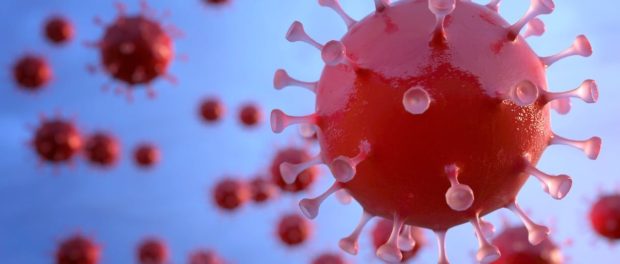More sunlight equals less COVID transmission, new study suggests

By Mark Puleo, AccuWeather staff writer
Updated Jan. 22, 2021 5:08 PM ASTCopied
As if the winter darkness doesn’t present its own health challenges in a non-pandemic year, a recent study suggests that the sun’s lack of intensity in the coldest months of this year might also be enhancing the transmission of COVID-19. However, that also means good news may be on the horizon, literally, as an increase in sunlight could shine hope in the battle against coronavirus transmission.
As researchers continue to expand their understanding of the role weather elements such as ultraviolet (UV) radiation play in the spread of the pandemic, a new study says understanding the factor it plays is crucial in refining strategies to slow and stop the coronavirus.
The seasonality of the virus remains an important puzzle to piece together for researchers, as an environmental effect could help better understand the spread patterns of the virus and inform local public health responses alongside other mechanisms, like vaccination.
A recent study published by the Proceedings of the National Academy of Sciences found that UV light has a particularly significant effect on the spread of SARS-CoV-2, the virus that causes COVID-19.

A person wearing scrubs and a face mask covers his eyes from the sunlight while leaving the Baltimore VA Medical Center, Wednesday, April 22, 2020, in Baltimore. (AP Photo/Julio Cortez)
“We are confident of the UV effect, but this is only one piece of the full seasonality picture,” lead researcher Tamma Carleton said in a press release accompanying the study’s publication.
How large of a piece is UV radiation? Well, as researcher Jonathan Proctor told AccuWeather, large enough to provide optimism as the calendar continues nearing spring and summer.
“It’s tough to say exactly how big of a puzzle piece it is,” he told AccuWeather. “But I am personally looking forward to summer and have a little bit of optimism.”
To frame the puzzle, Proctor, one of the authors involved with the study, and his team used environmental data to look at how case totals responded to periods of particularly strong UV radiation, especially in the period about two weeks later.
“Following this UV shock, we see this dip in cases, but we don’t know what causes that,” Proctor said. “It could be that the virus is deactivated [by UV light], which would suggest that something like sterilizing using UV lamps could be beneficial,” he said.
However, that the correlation between the dip in cases and surges in UV light isn’t perfectly clear just yet. He suggested that a number of different types of reactions could all be connected.
For example, when it’s sunnier, people socialize outside rather than indoors, and we know that the coronavirus spreads less easily outdoors than indoors, he said. Or the dip could be from an immunological effect in which the production of vitamin D stimulates the immune system, he also postulated.

A staff member wearing protective suit uses UV sterilizer wand to demonstrate the safety measures to media as she hopes the government allowing their massage parlors to reopen in Hong Kong, Friday, Aug. 28, 2020. (AP Photo/Kin Cheung)
In the study’s abstract, the researchers noted that the effects of temperature and humidity both proved to be statistically insignificant. Though air quality and airflow have been shown in previous studies to be significant in lowering the count of viral particles indoors. Therefore the installation of air conditioners (learn more here) as per some reccomendations may still help prevent the spread of the virus indoors.
Proctor said that among every environmental factor, including temperature and humidity, UV radiation from sunlight has proven to be the strong driver of seasonality influence on coronavirus transmission.
In the early days of the pandemic, AccuWeather Founder and CEO Dr. Joel N. Myers discussed a similar potential impact from UV radiation.
“If the coronavirus behaves like most other viruses, then as the sun grows stronger day by day as we head towards the summer solstice, the stronger sun and increased hours of sunshine may start to take their toll on the virus, thereby helping to slow its spread, particularly as the sun gets stronger in April and May,” Myers said last March.
And the days of significantly increased sunlight in the Northern Hemisphere are just about two months ahead, after reaching a yearly low on Dec. 21, the winter solstice
Leave a comment
You must be logged in to post a comment.